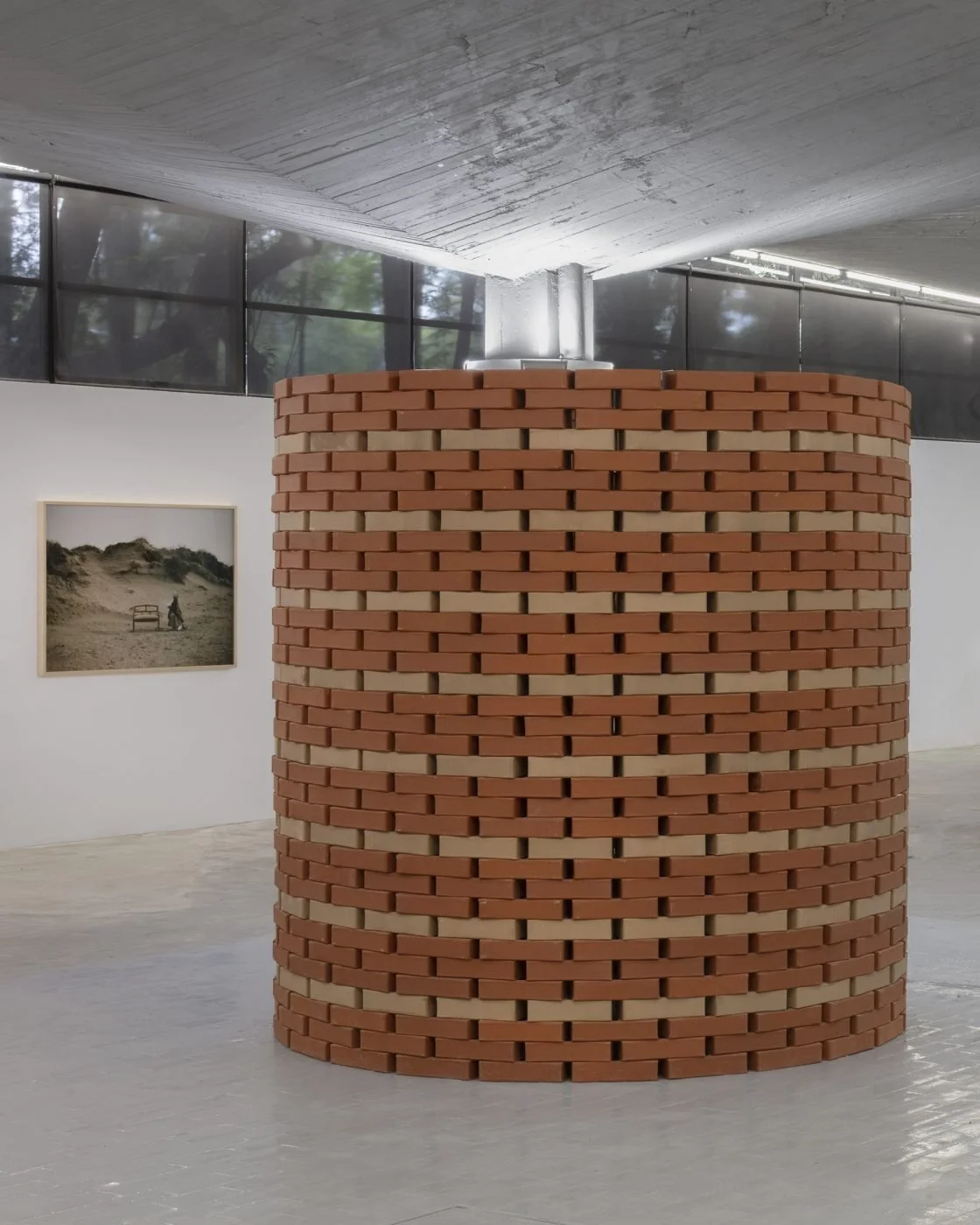by Jan Tumlir
“Art is what it has become,” Theodor Adorno unequivocally declares in Aesthetic Theory (1970). His statement implies that the original meaning of a work can be completely overturned by its contemporary circumstances. A similar point can be made about gallery practice: Operational protocols, once seemingly set in stone, can undergo ground-up rethinking with every slight shift in our systems of informational and economic distribution. Jorge Pardo’s latest outing at 1301PE addressed this process from an ironic distance. But some measure of warmth could also be felt here, directed from the artist to the gallery’s founder, Brian Butler, with whom he has worked closely since the earliest days of his career.
This show consisted of just one painting, Untitled, 2024, the scale and proportions of which closely matched those of the wall on which it hung, one that faced the entrance to a reconfigured downstairs gallery. Normally, this space opens onto a corridor that connects to the reception desk and office, and, farther on, to a stairway leading up to a second showroom. On this occasion, however, the passage had been sealed. In a period when commercial galleries are increasingly prone to hedging their bets with “mixed nuts,” something-for-everyone assortments of art, this was a rather striking proposition. Even more so was the fact that this work could be read as a kind of tribute to its site. At a distance, the painting appeared resolutely abstract, nonreferential, this impression reinforced by its title (or lack thereof). Observed more closely, it was revealed to be suffused with information. Its surface teems with material gleaned from every poster Butler had produced to accompany the gallery’s exhibitions up to then. Snippets of typography and fragments of imagery are scattered throughout, as if drawn through a shredder and then spread, mulch-like, across the picture plane. As with much of the artist’s work, Pardo layered, condensed, and recomposited the source data with the aid of computer programs run with minimal interference. Nevertheless, the result bore a strikingly organic aspect. From its earthy, autumnal tones to the quasi-gestural application of each daub of color, the painting greeted the eye as a kind of Arcadian landscape akin to those by Édouard Vuillard.
Read more here.



















